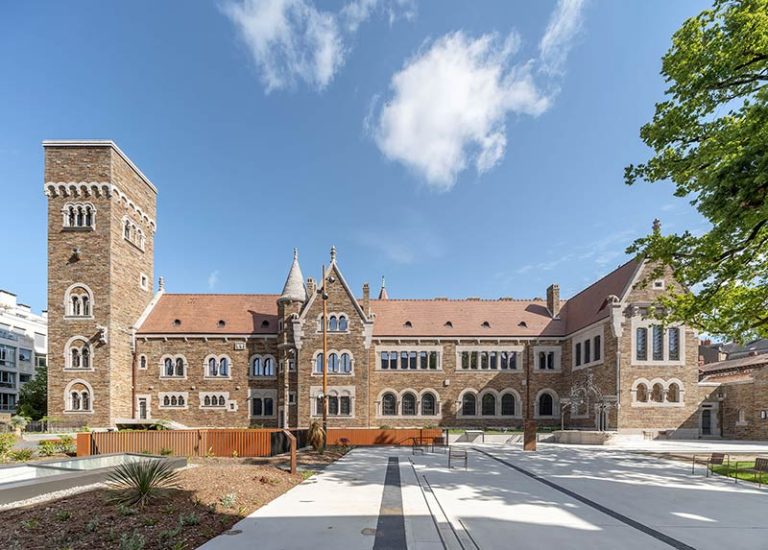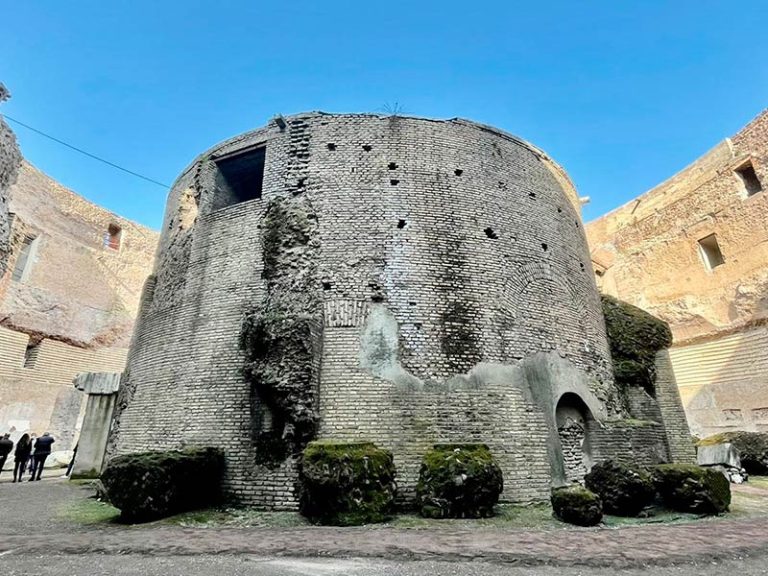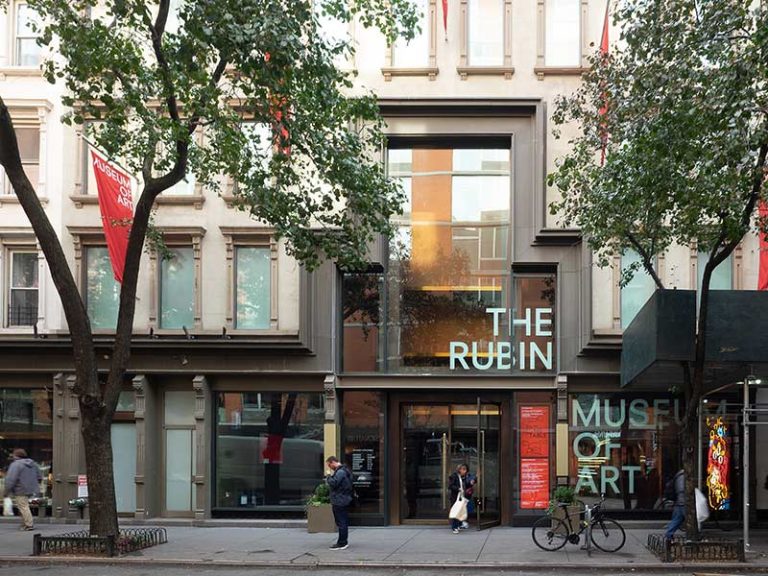For several weeks, Céline Paul had to hide vital information from her teams. Not bad news, no: the director of the Adrien-Dubouché National Museum in Limoges simply had to hold her tongue not to reveal the obtaining of a third star at the Green Guide edited by Michelin. “Knowing the good news without being able to share it was the most difficult thing! », declares the curator at the beginning of April, when the distinction is officially announced during a party. The local and national press immediately set off to relay the information, demonstrating the growing interest of the media and museums for the stars distributed by the Green Guide. “The museum is now as starred as the Louvre”, notice then the daily 20 minutes. And it is indeed to a very closed circle that the museum dedicated to porcelain has access: only around twenty French institutions have managed to obtain three stars, the maximum score, in the famous guide [voir tableau]. “We’ve been asking ourselves the question of a third star for this ceramics museum for six yearsreports Philippe Orain, director of the collection. We took the time needed to confirm our intuition: ceramics not being a subject that fascinates everyone, I took care to send an author who has no appetite for the subject. The result was unanimous. »
Since the Limogeaud museum received the supreme distinction of the guide, sisters and brothers of the director of the place assail it with questions in order to obtain the recipe for success. Consistency in the quality of the programming as well as the reception and mediation, right down to the smartphone visit companion particularly appreciated by the guide’s inspectors, are points that have allowed the Adrien-Dubouché Museum to be rewarded. “It’s not the extension [inaugurée en 2012] who makes the third star, emphasizes Celine Paul. It’s a kind of spirit of the place that was praised, the bond forged with the visitors by all the teams. »
9 evaluation criteria
The director of Green Guide demystifies the process of awarding these coveted stars: “There are never any traps! This is the image of Wing or thigh… » The authors of the guide do not systematically operate anonymously. “We have no problem introducing ourselves, we are able to discern a privileged visit or not”, specifies Philippe Orain. Once the places have been duly inspected, a precise scoring mechanism is triggered: nine criteria are evaluated, scored in a very academic way from 0 to 5. The scoring is then weighted, and the final result invalidates or confirms the authors’ impression. A place that “Worth the trip” (three stars) becomes, with a clear head, a site that “Worth a detour” (two stars).
The criteria evaluated range from the most factual (the labels awarded, a comparison with similar sites) to subjective assessments (the beauty of the place, the quality of the reception and the visit), objectified by the repeated visits of different authors with varied profiles. A crucial criterion for inspectors of the Green Guide is that of the first impression: “The first time I went to the Musée des Augustins, I stood in line in the rain and bought my ticket in a small, dark room,” remembers Philippe Orain. The Toulouse museum has since undertaken work to provide itself with a real entrance, in order to take care of this decisive “first impression”.
Sticker 3 stars of the Michelin Green Guide 2023
At the Museon Arlaten, departmental museum of Arles ethnography, Cyril Brunet has just received the sticker that the Green Guide been sending to distinguished places for some years. “I will immediately replace the “2022” with the “2023” on our ticket office! », breathes the director of communication of the museum, before carrying out this spring ritual. After eleven years of closure, partly for work, the Provençal museum was awarded two stars a few weeks after its reopening in May 2021. As in Limoges, this reward is largely due to the investment of the reception and mediation teams: “With the “Covid” period, we have been able to take the time to make our reception teams appreciate the collections, and they have become their ambassadors. They are not just cashiers and cashiers! »says Aurélie Samson, director of the museum. “The human, the welcome, the mediation: all of this is essential, it is about the satisfaction of the visitor, confirms Philippe Orain. Agents coming to talk to you is always better than a guard looking at his smartphone. »
“Push” lesser-known places
But the quality of the museographic presentation remains underlined by the stars of the Guideas at the Adrien-Dubouché Museum, which manages to stage a niche subject for the general public, or at the Museon Arlaten, with its original proposal around a “museum of museography” from 1900 to today. In both cities, the stars are a strong invitation to open the door: “The objective of Green Guideis to help our readers to “prioritize” their visits according to the time they wish to give them”, recalls Philippe Orain. In a city like Arles, where the profusion of cultural offerings can make your head spin, the Green Guide restores visibility to departmental museums, sometimes overshadowed by the national communication of the Rencontres, this great photography festival, or Luma Arles. Thus, three years after the extension of the Musée départemental Arles antique in 2013, the guide awarded it three stars, for the ” push “ according to the term of Philippe Orain, and signify to its readers the international importance of its collections. “With the Guide, we want to prevent people from missing out on beautiful places, and going to the same places all together,” says the director of the collection. In Rome, the Green Guide gratifies the very popular Borghese Gallery with three stars, but also the lesser known National Roman Museum: “Here there are real qualities of appreciation of the works, few people, and you are in a palace! It is an alternative. » THE Green Guide is thus an interesting lever to spread the visits in different places, but also in time. ” The command [passée à la maison d’édition pour un] Green Guide was part of our “four seasons” tourism strategy,” explains Aline Guiho, head of communication at Golfe du Morbihan-Vannes Tourisme. This publication was commissioned from Editions Michelin, “like any media campaign”,with this difference that the work of the authors here is totally independent: “This is not yet another guide from the tourist office, we do not intervene in the choice of addresses”, says Aline Guiho. To promote the destination in the form of a “city-break” (short stay over a weekend), available in each season, the tourist office relies on the rich medieval heritage of the city of Vannes, a real loss leader. “We worked with the Michelin guide because they have this appetite, around heritage, historical sites, when the Backpacker’s Guide will be more focused on good addresses. »
Reference for cultural tourism, the Green Guide is increasingly attracting the attention of museum directors and heritage site managers. However, the economic impact of these rankings cannot be quantified: to date, there is no sufficiently detailed study of the public on the impact of tourist guides. Conversely, museums have become essential in the pages of the soon-to-be-hundred-year-old guide: “All museums are being renovated and become places that fit into the city, with renovations that put culture on a much more accessible level, far from the old museum before, observes Philippe Orain. When a city doesn’t have a museum, it’s out of luck! »

Museums distinguished by three stars in the “Green Guide” 2023 published by Michelin editions.
© The Arts Journal







